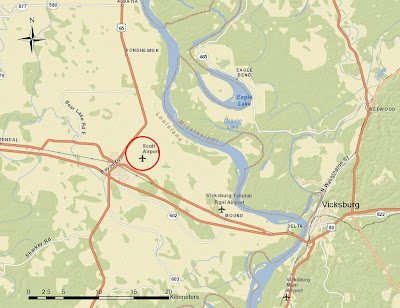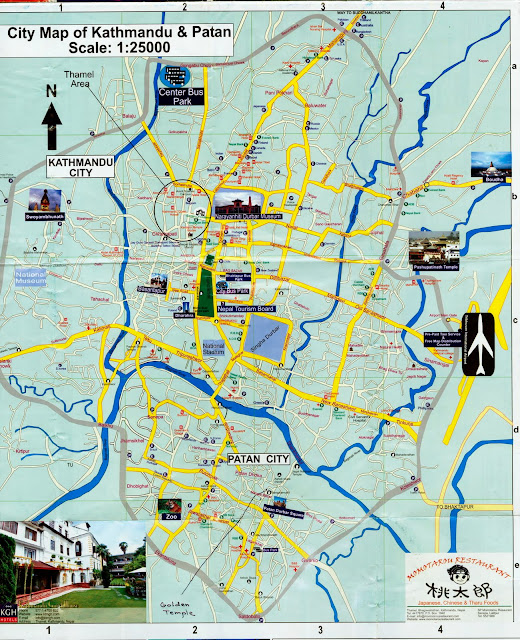For many years, a complex of brick and steel sheds stood on the west side of Levee Street close to where the historic Fairground Street bridge crosses the Kansas City Southern railroad yard. This was the cotton compress, address 2400 Levee Street (see the circle on the map).


This post card, circa. 1911, is from the Ann Rayburn Paper Americana Collection, Special Collections, University of Mississippi Libraries (originally from the International Post Card Co., New York, N.Y.).

This is a glass negative from the George Grantham Bain Collection at the Library of Congress, with title, "Louisiana Flood 1912, Cotton Compress at Vicksburg as a refuge." I am not sure if any of these buildings still stand.

According to a December 17, 2010, article in
The Vicksburg Post, the compress facility dates to 1903 and formerly housed a cotton gin and 13 warehouses and sheds with about 340,000 square feet of storage space. The view above was taken from the top of the levee looking east at about the same location as the 1912 flood photograph. Vicksburg is on the hill in the distance.


These two views show part of the complex from Levee Street. The
Post did not specify how long the compress had been unused, but the buildings were in poor shape because of water damage and asbestos exposure following years of vacancy. Notice the sign on the ground with scripture.


This press was under the tower in the upper photograph. I do not know the mechanics of how it worked, but I remember seeing steam and activity in the 1980s, when this was still a going concern.

A developer told the city's Board of Architectural Review that the Vicksburg Compress company planned to use some of the buildings as a self-storage facility. Other buildings would be demolished, and the 1940s water tower would be removed because it was unsafe.



The interior had typically interesting industrial archaeology to examine (and I like exploring places like this). Notice the large wood timbers holding up the roof.


The grimy old workbenches still had tools, pipe, and cans of chemicals strewn about.

You could even wash up...maybe.

Someone had stored some old American muscle cars, but they were in no better condition than the buildings.

While I was exploring on a December day in 2010, a small team was cleaning up bricks and loading them on pallets.

As of December 2011, many of the brick walls are gone, and I assume the bricks have been sold. But the steel sheds are still unused, and the water tower is still standing. These projects tend to take a long time in Vicksburg.
An interesting article on cottonseed oil mills is in: Wrenn, L. B. 1994. Cotton gins and cottonseed oil mills in the New South.
Agricultural History, Vol. 68, No. 2, Eli Whitney's Cotton Gin, 1793-1993: A Symposium (Spring, 1994), pp. 232-242. (Published by: Agricultural History Society)
These are digital images from a 10 megapixel
Sony R-1 digital camera, tripod-mounted. The interiors were multi-second exposures, good examples of how well-suited digital cameras are for low-light conditions. You no longer have to worry about reciprocity failure and color shifts as with film; just set the exposure and let the shutter stay open as long as needed. The R-1 has a superb Schneider lens.
Some black and white Panatomic-X film photographs of the compress are in my
2018 article (please click the link).

 This post card, circa. 1911, is from the Ann Rayburn Paper Americana Collection, Special Collections, University of Mississippi Libraries (originally from the International Post Card Co., New York, N.Y.).
This post card, circa. 1911, is from the Ann Rayburn Paper Americana Collection, Special Collections, University of Mississippi Libraries (originally from the International Post Card Co., New York, N.Y.).















